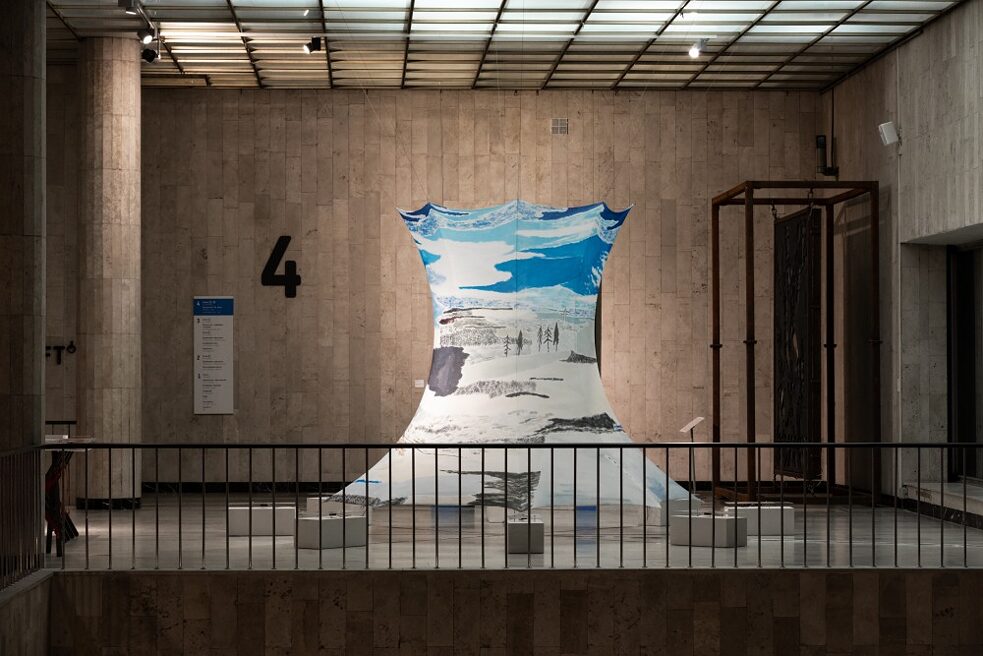Moscow
Play Tretyakov

The venue of “The City of Tomorrow” in Moscow is itself an important building of Soviet modernism. The New Tretyakov-Gallery was therefore an integral part of the exhibition, which was displayed in different lobbies and provided a view of the building's architecture. This path leads through the collection of Soviet modern visual art that originated in the “City of Tomorrow”.
The main focus of this version of “The City of Tomorrow” specially developed for Moscow, had three main themes: firstly, the Soviet city and secondly, its architecture in the Russian regions, which is still too little known in the capital. Three important subthemes of regional Russian architecture were organically incorporated, describing the centralized, multidisciplinary research-design institutes, the architecture of Soviet transport infrastructure and a very specific excursus presenting Soviet postmodernity in Novosibirsk. And thirdly, a separate section was dedicated to Moscow cinema theaters, presenting the history, architectural specifics, and the important functional role of those buildings in parallel to the situation today with Moscow's cinemas that are being destroyed within the plan of a new development project.
The major second focus of the exhibition was the reflection of the Soviet city in contemporary art: prominent Russian and international artists showed works and installations newly developed for the exhibition that deal with the "City of Tomorrow" from different perspectives. They iIncluded historical projects of Vadim Kosmachev and Elena Koneff, who participated in the formation of the space of Soviet cities in the 1970s, and iconic works of Paper Architecture by Yuri Avvakumov, connecting utopia with reality. A painting by Alena Kirtsova depicted details of modernist structures while “pretending” to be a geometric abstraction. The documentary and biographical narratives of Tatyana Efrussi, Marina Naprushkina and Anna Yermolaeva were presented next to the cinematic reflections of Deymantas Narkevichus and Josef Dabernig.
Olga Chernysheva s video-wall and Alexandra Papernos tableaus dealt with the living space of Soviet people, while a new audio-installation by Mikhail Tolmachev circulated around the soviet colonization of the tundra. The installations of Irina Korina and Dmitry Gutov created especially for the exhibition “take” and transform fragments of the Tretyakov Gallery building on Krymsky Val. The interest of these prominent contemporary artists in the subject once again shows how present and virulent the Soviet city is in the collective identity of the successor states of the USSR: their past, present and possible future.
This exhibition in the Tretyakov Gallery was the result of a long-term research project. More than 300 recognized masterpieces and little-known architectural monuments of Russia and the former Soviet republics were presented in the form of photographs, models, plans, and movie fragments from more than 70 archives.